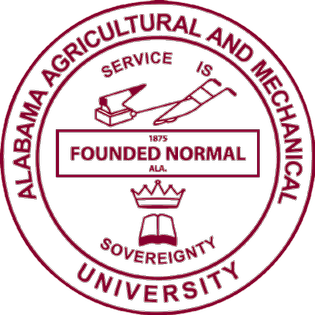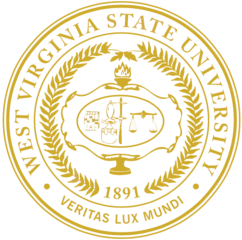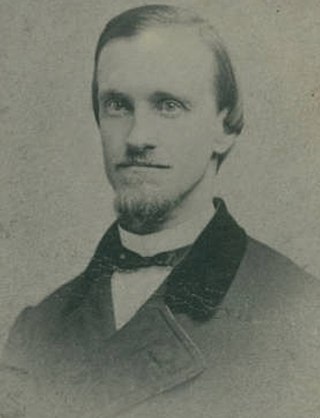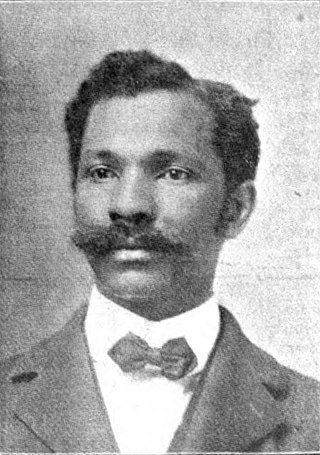
The Morrill Land-Grant Acts are United States statutes that allowed for the creation of land-grant colleges in U.S. states using the proceeds from sales of federally owned land, often obtained from Native American tribes through treaty, cession, or seizure. The Morrill Act of 1862 was enacted during the American Civil War, and the Morrill Act of 1890 expanded this model.
Separate but equal was a legal doctrine in United States constitutional law, according to which racial segregation did not necessarily violate the Fourteenth Amendment to the United States Constitution, which nominally guaranteed "equal protection" under the law to all people. Under the doctrine, as long as the facilities provided to each race were equal, state and local governments could require that services, facilities, public accommodations, housing, medical care, education, employment, and transportation be segregated by race, which was already the case throughout the states of the former Confederacy. The phrase was derived from a Louisiana law of 1890, although the law actually used the phrase "equal but separate".

The University of Nevada, Reno is a public land-grant research university in Reno, Nevada. It is the state's flagship public university and primary land grant institution. It was founded on October 12, 1874, in Elko, Nevada.

Tuskegee University is a private, historically black land-grant university in Tuskegee, Alabama. It was founded on Independence Day in 1881 by the Alabama Legislature.

The National Sea Grant College Program is a program of the National Oceanic and Atmospheric Administration (NOAA) within the U.S. Department of Commerce. It is a national network of 34 university-based Sea Grant programs involved in scientific research, education, training, and extension projects geared toward the conservation and practical use of the coasts, Great Lakes, and other marine areas. The program is administered by the National Oceanic and Atmospheric Administration (NOAA) with the national office located in Silver Spring, Maryland. There are Sea Grant programs located in every coastal and Great Lakes state as well as in Puerto Rico and Guam.

A land-grant university is an institution of higher education in the United States designated by a state to receive the benefits of the Morrill Acts of 1862 and 1890.
Historically black colleges and universities (HBCUs) are institutions of higher education in the United States that were established before the Civil Rights Act of 1964 with the intention of primarily serving African Americans. Most of these institutions were founded during the Reconstruction era after the Civil War and are concentrated in the Southern United States. During the period of racial segregation in the United States, the majority of American institutions of higher education served predominantly white students, and disqualified or limited black American enrollment. Later on some universities, either after expanding their inclusion of black people and African Americans into their institutions or gaining the status of minority-serving institution, became Predominantly Black Institutions (PBIs).

A normal school or normal college is an institution created to train teachers by educating them in the norms of pedagogy and curriculum. Many such schools are now called teacher training colleges or teachers' colleges, but in Mexico, continue to be called normal schools, with student-teachers being known as normalistas. Many schools currently require a high school diploma for entry, and may be part of a comprehensive university. Normal schools in the United States, Canada, and Argentina trained teachers for primary schools, while in Europe, the equivalent colleges typically educated teachers for primary schools and later extended their curricula to also cover secondary schools.

The territory of the United States and its overseas possessions has evolved over time, from the colonial era to the present day. It includes formally organized territories, proposed and failed states, unrecognized breakaway states, international and interstate purchases, cessions, and land grants, and historical military departments and administrative districts. The last section lists informal regions from American vernacular geography known by popular nicknames and linked by geographical, cultural, or economic similarities, some of which are still in use today.

Alabama Agricultural and Mechanical University is a public historically black land-grant university in Normal, Huntsville, Alabama. Founded in 1875, it took its present name in 1969. It was one of about 180 "normal schools" founded by state governments in the 19th century to train teachers for the rapidly growing public common schools. It was one of 23 established to train African Americans to teach in segregated schools. Some closed but most steadily expanded their role and became state colleges in the early 20th century and state universities in the late 20th century. AAMU is a member-school of the Thurgood Marshall College Fund and is accredited by the Southern Association of Colleges and Schools. Alabama Agricultural and Mechanical University Historic District, also known as Normal Hill College Historic District, has 28 buildings and four structures listed in the United States National Register of Historic Places.

West Virginia State University (WVSU) is a public historically black, land-grant university in Institute, West Virginia. Founded in 1891 as the West Virginia Colored Institute, it is one of the original 19 land-grant colleges and universities established by the second Morrill Act of 1890, which evolved as a diverse and inclusive campus. Following desegregation, WVSU's student population slowly became more white than black. As of 2017, WVSU's student body was 75% white and only 8% African-American.
The history of Michigan State University dates back to 1855, when the Michigan Legislature established the Agricultural College of the State of Michigan under the encouragement of the Michigan State Agricultural Society and the Michigan Farmer, the state's leading agricultural periodical. As the first agricultural college in the United States, the school served as a model for other institutions of its kind established in the period, to give an instance, the Agricultural College of Pennsylvania.

David French Boyd was an American teacher and educational administrator. He served as the first head of Louisiana State University (LSU), where he was a professor of mathematics and moral philosophy. He was also briefly the president of the Agricultural and Mechanical College of Alabama.
A common perception is that the birth of Cooperative Extension followed the passage of the Smith-Lever Act of 1914, which provided federal funds to land-grant universities to support Extension work. In the formal sense, this is true. Even so, the roots of Cooperative Extension extend as far back as the late 18th century, following the American Revolution, when affluent farmers first began organizing groups to sponsor educational meetings to disseminate useful farming information. In some cases, these lectures were delivered by university professors — a practice that foreshadowed Cooperative Extension work more than a century later.
The Preston and Olin Institute was a Methodist academy for boys in Blacksburg, Virginia which operated from 1851 to 1872. They chose the name Preston for Colonel William Ballard Preston, of nearby Smithfield Plantation, a well-known Montgomery County businessman, farmer, and statesman and a nationally known politician. The Methodist Church selected the name Olin after Stephen Olin, a beloved Methodist minister and former president of Randolph-Macon College. Olin and Preston Institute, a school for boys, opened in 1851, with William R. White as principal. The town already had a school for girls: the Blacksburg Female Academy, incorporated by legislative act in 1840. Until it was rechartered in 1869, it was named The Olin and Preston Institute.
This is an incomplete list of historic properties and districts at United States colleges and universities that are listed on the National Register of Historic Places (NRHP). This includes National Historic Landmarks (NHLs) and other National Register of Historic Places listings. It includes listings at current and former educational institutions.
The Association of Public and Land-grant Universities (APLU) is a research, policy, and advocacy organization of public research universities, land-grant institutions, state university systems, and higher education organizations. It has member campuses in all of the United States as well as the District of Columbia, four U.S. territories, Canada, and Mexico.
The history of North Carolina Agricultural and Technical State University, the first land grant college for people of color in the state of North Carolina, can be traced back to 1890, when the United States Congress enacted the Second Morrill Act which mandated that states provide separate colleges for the colored race. The "Agricultural and Mechanical College for the Colored Race" was established On March 9, 1891 by an act of the General Assembly of North Carolina and began in Raleigh, North Carolina as an annex to Shaw University. The college made a permanent home in Greensboro with the help of monetary and land donation by local citizens. The college granted admission to both men and women from 1893 to 1901, when the board of trustees voted to restrict admission to males only. This policy would remain until 1928, when female students were once again allowed to be admitted.

James Munroe Canty was an American educator, school administrator, and businessperson. Canty was an acting principal of the West Virginia Colored Institute in 1898 and is considered by West Virginia State as an acting president. Canty also served as the superintendent of Mechanical Industries for West Virginia Colored Institute from 1893 through 1914.











